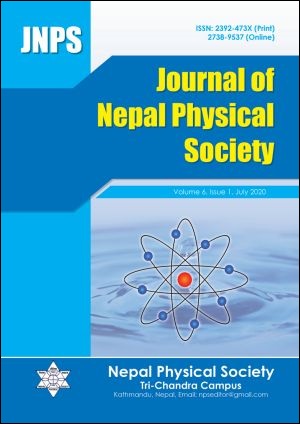Target Design for XUV Probing of Radiative Shock Experiments
DOI:
https://doi.org/10.3126/jnphyssoc.v6i1.30514Keywords:
Radioactive hydrodynamics, Radiative shocks, micro targets, Laboratory astrophysics, X-ray laser, XUV probingAbstract
Radiative shocks are strong shocks characterized by plasma at a high temperature emitting an important fraction of its energy as radiation. Radiative shocks are commonly found in many astrophysical systems and are templates of radiative hydrodynamic flows, which can be studied experimentally using high-power lasers. This is not only important in the context of laboratory astrophysics but also to benchmark numerical studies. We present details on the design of experiments on radiative shocks in xenon gas performed at the kJ scale PALS laser facility. It includes technical specifications for the tube targets design and numerical studies with the 1-D radiative hydrodynamics code MULTI. Emphasis is given to the technical feasibility of an XUV imaging diagnostic with a 21 nm (~58 eV) probing beam, which allows to probe simultaneously the post-shock and the precursor region ahead of the shock. The novel design of the target together with the improved X-ray optics and XUV source allow to show both the dense post-shock structure and the precursor of the radiative shock.
Downloads
Downloads
Published
How to Cite
Issue
Section
License
All right reserved. No part of this Journal may be reproduced in any form or by any electronic or mechanical means, including information storage and retrieval system, without permission in writing from the publisher, except by a reviewer who may quote brief passage in a review. The views and interpretation in this journal are those of author(s) and they are not attributable to the NPS.




